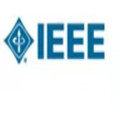The immersed finite element-finite difference (IFED) method is a computational approach to modeling interactions between a fluid and an immersed structure. This method uses a finite element (FE) method to approximate the stresses and forces on a structural mesh and a finite difference (FD) method to approximate the momentum of the entire fluid-structure system on a Cartesian grid. The fundamental approach used by this method follows the immersed boundary framework for modeling fluid-structure interaction (FSI), in which a force spreading operator prolongs structural forces to a Cartesian grid, and a velocity interpolation operator restricts a velocity field defined on that grid back onto the structural mesh. Force spreading and velocity interpolation both require projecting data onto the finite element space. Consequently, evaluating either coupling operator requires solving a matrix equation at every time step. Mass lumping, in which the projection matrices are replaced by diagonal approximations, has the potential to accelerate this method considerably. Constructing the coupling operators also requires determining the locations on the structure mesh where the forces and velocities are sampled. Here we show that sampling the forces and velocities at the nodes of the structural mesh is equivalent to using lumped mass matrices in the coupling operators. A key theoretical result of our analysis is that if both of these approaches are used together, the IFED method permits the use of lumped mass matrices derived from nodal quadrature rules for any standard interpolatory element. This is different from standard FE methods, which require specialized treatments to accommodate mass lumping with higher-order shape functions. Our theoretical results are confirmed by numerical benchmarks, including standard solid mechanics tests and examination of a dynamic model of a bioprosthetic heart valve.
翻译:隐化的定点元素- 最小值差异 (IFED) 方法是一种计算方法,用于模拟流体和沉淀结构之间的相互作用。这种方法使用一种限值元素(FE) 方法,以在结构网格和定点差异(FD) 上估计压力和力,以估计整个流体- 结构系统在笛卡尔语网格上的势头。这种方法使用的基本方法遵循的是用于模拟流体- 结构互动(FSI) 的沉浸边界框架(FSI), 即一个分流操作器将结构结构力延长结构力到卡斯特尔电网, 以及一个速度内插管操作器将电网上定义的速位限制到结构网格中的结构网格。 武力的传播和速度间插法都需要将数据投射到有限的元素空间上。 因此, 评估任何组合操作者都需要每一步解决一个矩阵的矩阵等式矩阵。 大规模拼凑,其中的预测矩阵有可能大大地加速这一方法。 构造操作者也要求确定结构结构图上的位置, 其中的动力和天线流体- 天体- 的精度- 的精度- 等值是这个结构- 等值- 的阶- 结构- 模型的计算中, 我们的计算中, 的计算中所使用的的算法的阶值的阶值的计算法的计算中, 的阶值的计算中, 的阶值的计算法的计算结果是用来用来将使用这个结构- 。



